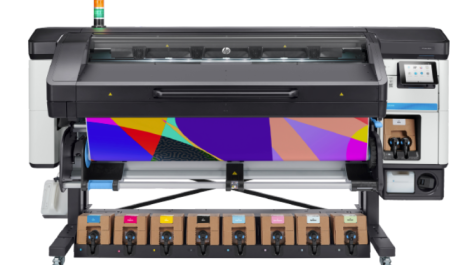Above: Gareth Stoten.
Cost savings will drive the adoption of all-digital colour printing in the transactional world, claims Pitney Bowes. Gareth Stoten explains the argument to Simon Eccles.
At drupa in May Pitney Bowes showed an end-to-end implementation of its White Paper Factory, but with a new twist. Instead of promoting it as the means to the end of transpromo, it’s reinvented it for times of austerity and is now stressing it as a cost saver. Transpromo can come later, once the figures stack up, according to Gareth Stoten, vice president of sales for Pitney Bowes Document Messaging Technologies Europe.
‘At drupa we started sharing our ROI models with potential and actual customers. If you can’t prove an return on investment, then White Paper Factory is just a nice story, really,’ he says. ‘But we’ve now got numerous projects under way and they are validating the cost savings for white paper.’
Five years ago, transpromo was the next big thing in corporate print. If you’ve managed to miss it, transpromo is a portmanteau word combining ‘transaction’ and ‘promotion.’ The anticipated arrival of high speed web fed digital presses would open up a whole new marketing channel, went the theory. Banks, building societies, insurance companies, utilities and telecoms providers had a captive audience for their transactional print, that was already personalised by definition. People might bin obvious ‘junkmail’ without reading it, but everyone opens and scans through their electricity bills and bank statements. So why not add some colourful marketing offers on the same sheets, and maybe the same envelopes, printed by all-digital colour presses? The space might even be sold to third parties.
It was a good argument and still is, though take-up is patchy. So far it’s the big retail chains that seem to have latched onto it the most, with data mining used to generate targeted voucher incentive schemes for their storecard users.
Elsewhere in this issue HP’s evangelist Pat McGrew restates the case for transpromo. However, it’s still often pitched as an idea for the future. With honourable exceptions it’s been slower than expected to take off, but Pitney Bowes now reckons it knows the reason why.
According to Mr Stoten: ‘For a few years everyone was regarding transpromo as a
saviour. But that didn’t cut costs. It can be a powerful partner, but it is a revenue driver, not a cost cutter. We’ve found that the actual reason a company goes from pre-printed shells to white paper is cost savings. A few years ago the TCL of colour was not a good case. Now it is.’ Acronym collectors will know that TCL stands for ‘total cost line,’ the sum of all fixed and variable costs.
‘It’s about ROI, Mr Stoten stresses. ‘If you can persuade people it will save money, then they will be interested. You can initially save costs by going to white paper, and then phasing in transpromo. If you go into transpromo first, you have to prove that it will increase revenue, which is difficult. However, proving a cost saving from replacing shells is easier and you can still add transpromo later.’
Indeed, he says, ‘transpromo is just a small part of the White Paper Factory concept. WPF is about the effective use of colour throughout, for instance on colour envelopes. You can overprint pre-formed envelopes on the inserter using our inkjet heads, or you can print a full colour wrapper and merge that with the printed inserts. The envelope becomes a marketing tool. We’ve got studies that say that the number of envelopes that are opened goes up two or three times if they are personalised and in colour.’
This is something that Pitney Bowes has come to discover as it worked with clients as they adopted white paper working, he says. ‘Using our Pro Services capability we’ve built financial models where customers can plug in their own costs and see the results. When you partner with clients to really understand their costs, you find that some savings may not be as much as you’d anticipated, but we are also finding all sorts of cost saving opportunities that we never knew about before.
‘You can take the current spend on pre-printed paper, and subtract the cost of white paper printing, which can be on cheap uncoated stock.’ That’s the obvious part, he explains. ‘But also, standardised pre-printed forms or contracts have terms and conditions on the reverse of each one, so you can’t print double sided. With white paper you only need to print those T&Cs once. So for a five-page letter, you only need three sheets, with the T&C on the reverse of just one of them. With pre-printed T&C you’d need five sheets.
‘So for this example white paper costs less to print, it uses less paper and it costs less to post. A saving on three counts. Not everyone realises this at first. On top of that, a multi-page document that might have needed a C5 envelope might now fit into a DL. Or you might go from C4 to C5 because a multi page document is now thin enough to fold.’
Envelopes themselves present additional opportunities, he adds. ‘Pre-printed envelopes tend to have a logo, a return address and maybe a window. The window constricts the design of the insert as the address can only go in one place. Either that or you need to keep a stock of envelopes with different window positions for different clients, which costs more and risks errors.
‘With our Mail Wrapping solution you can make an envelope on the fly from a roll of plain paper. The envelope can have a window or not, or a different flap profile of any type you want.’
Avoiding windows is desirable for several reasons, Mr Stoten says. One is cost/weight, another is data protection and a third is that the address position can be anywhere you like. There are big storage/wastage savings too.
While this shift of emphasis from transpromo to cost savings as a prime argument for going digital is an interesting one, this would equally apply to third party offerings. So how does Pitney Bowes make itself stand out?
For one thing it says that it can work with most of those third parties so there’s no conflict. It will happily sell you an IntelliJet, but if you prefer to buy your print line from the likes of Kodak, Océ or Xerox, it can plug into that. ‘The white paper factory benefits can apply irrespective of volume, so you could use it with a small sheet-fed press,’ says Mr Stoten.
‘If you want to implement white paper, it’s not just a matter of buying a colour printer,’ he asserts. ‘For WPF we have to integrate data document composition, and output management, printing itself, finishing, postal optimisation, cross media. You have to be able to link all these together, and we can provide the glue that puts it all together. We are unique in being able to deliver all those components – software, print, finishing.’
Job management has to change too, he says. ‘Traditionally you had discrete jobs that were all pre-printed. With white paper working there are no pre-prints, so you can merge multiple jobs for one run, but for the next run it may be a different combination of jobs. So you have to be able to keep track of everything. We have a new model of our DF Works job management that can handle parent and child levels, where we can track at the piece level across multiple jobs.’
‘We have the components and the expertise. We have extensive experience in bringing everything together to deliver them. You can buy it all from Pitney Bowes, but we will also work with existing solutions. We can interpret third party systems, not just our own systems, so customers don’t have to start from scratch if they have existing systems.’
What’s White Paper Factory?
The White Paper Factor (WPF) in Pitney Bowes’ terms is something of a concept, an all-encompassing term for the idea of replacing the older methods of personalising communications by variable data overprinting onto pre-printed offset shells, for statements, proposals, brochures, forms, stationery and envelopes. Instead, it proposes full-colour all-digital printing, on-demand onto blank white papers.
The concept isn’t new, but Pitney Bowes claims to be unique in that it can supply every component in the chain, from document composition software that links to any type of data source, from enterprise ERPs down to mail merges, through high speed digital presses, mailing and insertion lines. It can track every document and mailpiece throughout the system via its DF Works management software.
Pitney Bowes was originally known primarily for its mailing systems, but has extended this by logical progression into a very extensive range of data analytics, document composition, addressing, mailing and management software. A lot of this has been by acquisition (notably Doc1 composition software), geographical analysis software (Mapinfo) and centralised ‘hybrid mail’ systems.
Since 2010 PB has also had a partnership to sell HP’s T-series inkjet webs exclusively into transactional markets. It renames these machines IntelliJets, but their hardware is exactly the same.
Although it can supply end to end systems, Pitney Bowes stresses that it’s just as important that it has the experience to can integrate at any point into existing set-ups or third party systems.
Contact: www.pitneybowes.co.uk





